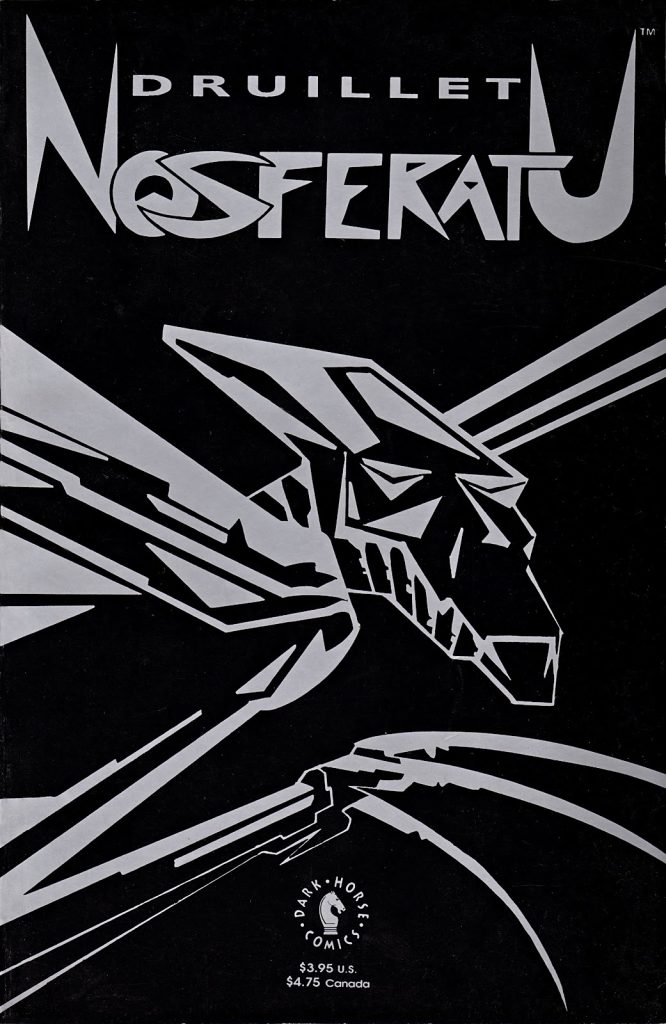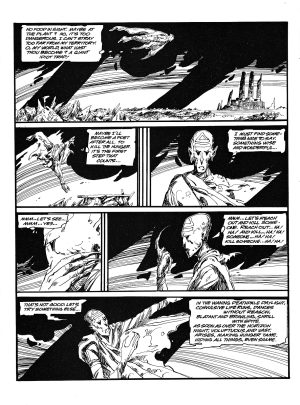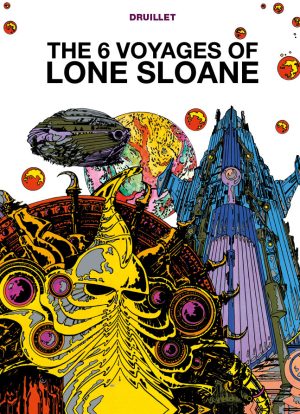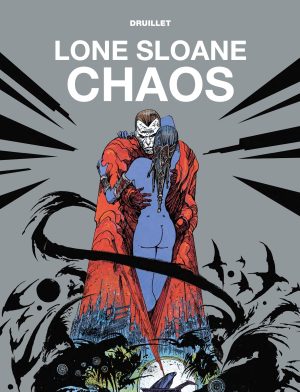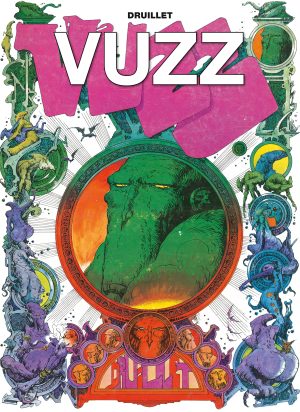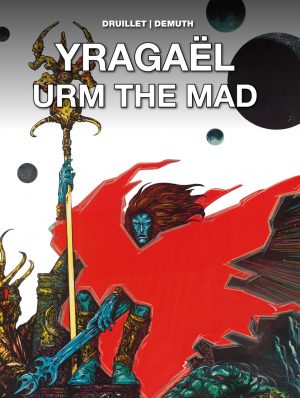Review by Frank Plowright
Having been incredibly prolific (and influential) from the late 1960s and throughout the 1970s, Phillipe Druillet’s artistic inclinations increasingly turned away from comics in the 1980s. Two volumes of his Lone Sloane series were all that appeared during the decade when several other projects were stillborn. However, in 1989 there was the surprise publication of Nosferatu.
Druillet uses the visual representation from Murnau’s vampire film, but rather than confront the repugnance of a vampire’s behaviour, Druillet’s horror is more existential. His Nosferatu exists in a world without humans to prey on, as a vampire at the end of days, bored and slowly going mad. He quotes the poetry of Charles Baudelaire to a shop dummy, regrets the past, and bemoans his lot as the last vampire as he explores what the world has become. Frankly, the opening third is confused and dull, and the latter is rarely a term to be applied to Druillet’s work.
Thankfully we have the art. It’s unusual for Druillet, firstly a throwback to the black and white linework he produced during the 1960s, and if not knowing who drew the story it’s possible to see Barry Windsor Smith as an influence. Smith is the tighter artist, but he’s there in the way Nosferatu looks. Druillet’s always been a conceptual creator moving on to the next item that interests him, and so it is with Nosferatu, and once he’s got the poetry out of his system the artistic horizons widen. Nosferatu moves among fantastical radioactive mutations and creates his own god.
From start to finish it’s utterly bonkers in various ways, but Druillet’s imaginative art saves Nosferatu from total indulgence.
